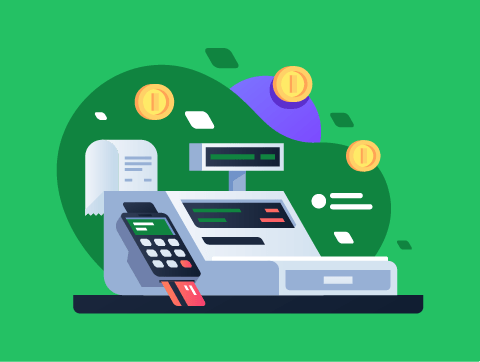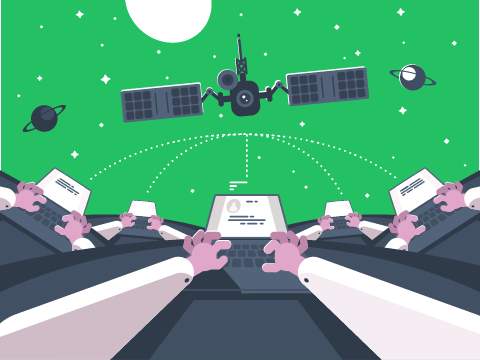Introduction
Technology systems do not stay the same for long; they are constantly being changed and improved.
Companies will not pay for a new system, though, unless it offers a measurable benefit.
In this lesson, we’ll learn about:
- Gaining a competitive advantage over other businesses to attract more customers.
- Reducing costs to help raise profits.
- Improving performance to make the business more efficient.

Competitive Advantage
Businesses always want to gain an edge over their competitors.
This might be to improve production speed and reduce costs, add new advanced features, or improve the performance of the actual product or service being offered to customers.
One of the best ways to do this in the modern business world is by developing a new technology system.
Let’s look at an example of how technology systems can gain a competitive advantage.

Competitive Advantage Example
Retail businesses often innovate with new payment methods to gain an advantage over their rivals.
They might do this by adding self-service tills and implementing contactless payment methods like Apple Pay and Google Wallet.
The goal behind these is to make it quicker for customers to shop in their stores, so they are more likely to return rather than go to a rival.

Reduced Costs
Using new technology systems can reduce a business’s operating costs.
This reduction could be achieved by requiring fewer staff members or by making it quicker to develop or deliver products and services.
If a business can reduce its costs, this would obviously benefit it greatly, as it can increase the business’ profits or reduce the prices of its products and services to help it gain an advantage over its competitors.
Businesses use technology to reduce costs everywhere.
Let’s look at an example of how technology systems can reduce costs.

Reduced Costs Example
Retail stores like supermarkets, for example, have implemented self-service tills and scan-as-you-shop systems, which means they need fewer staff to perform the checkout process.
Because the business needs fewer staff working tills to check out customers, it has reduced its costs by paying lower staff wages.
Other examples could include businesses installing satellite navigation systems in all of their delivery lorries to help reduce the time it takes to deliver their products.
This can save on fuel and reduce the need for delivery staff.

Improved Performance
A new technology system can make a business more efficient. By this, we mean that the business can perform its daily activities quicker and more easily.
When a business becomes more efficient, we say they are improving its performance.
Improving the business performance can support the other two key drivers by giving it an advantage over competitors and reducing costs.
There are other benefits though, such as improved staff morale, as if it is easier for them to do their job they will be happier.
Let’s look at an example of how technology systems can improve performance.

Improved Performance Example
Many businesses have implemented technology systems to make it quicker and easier for staff to communicate.
This could be having an email system for staff to contact each other or using video conferencing software so that staff don’t need to travel long distances to take part in meetings.
A retail example is the implementation of touchscreen tills. These are used heavily at fast food restaurants, which makes it far quicker and easier for staff to select the meal item the customer orders.

Lesson Summary
Gaining a competitive advantage is one of the reasons for changing technology systems.
An example of this would be shops implementing mobile payment methods earlier than their rivals to make checkout more efficient.
Reducing costs is another reason for implementing new technology systems.
For example, retail stores implemented self-service tills, which required fewer checkout staff and saved money on staff wages.
Improved performance is the final reason for implementing a new technology system.
An example of this is the use of touch screen tills in fast food restaurants, which makes it easier for staff to input customer orders.
